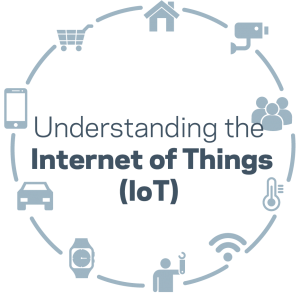Accelerating a Connected New Zealand
On the 29th June 2017, in Wellington, the Minister of Communications formally launched the IoT “Accelerating a Connected New Zealand” report under the banner of the IoT Alliance (of which TUANZ is a foundational partner).
Read the full report here: Accelerating a Connected New Zealand.
The Internet of Things – what is it and why is it important?
The Internet of Things (IoT) is a collection of real life things that are connected to the internet. The same way a laptop or mobile phone connects to the internet, other things – devices, objects, machines, animals or people – can be connected and interact with each other. These connected things collect and exchange data. The data from a connected world benefits individuals, organisations and society by helping us make better decisions, problem solve and improve productivity. For example, farmers place sensors in their fields to understand the temperature and moisture content of the soil. This provides critical information for farming decisions like sowing seed and applying fertiliser.
Data can become Information and Insight
The true value of collecting and exchanging data is in using analytics to provide further information and insight. Instead of simply inspecting raw temperature and moisture readings, analytics can solve problems such as “which eld needs irrigating?” or “when is the optimal time to apply nitrogen?”.
Insight can become Action
The Internet of Things can use data to automate actions such as moving or controlling an object. For example, using IoT, sensors can instruct vents on shipping containers to open and close automatically to regulate the temperature. When transporting produce, this results in fresher produce. On the farm, an IoT system can automate the irrigation of crops. Or street level sensors in a city might be used to change traffic lights.
Action becomes Intelligent
Connecting together different things using the internet means people and organisations can obtain new insight. Our farmer can combine Metservice weather data with his soil temperature and moisture readings. Now his irrigation system won’t waste precious water irrigating crops when rain is forecast.
Re-use of Data
Data collected via IoT can be used for more than one purpose. For example, New Zealand hi-tech exporter, EROAD, sells an in-vehicle tracker that helps companies track their fleets and automate road user charges. The anonymised EROAD data is then reused to provide insights on road use to the Government. The Government, in turn uses these insights to improve the road network in New Zealand.

